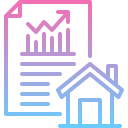Regional Housing Affordability Index Overview: What It Means for Your Community
Chosen theme: Regional Housing Affordability Index Overview. Explore how incomes, mortgage rates, and home prices intersect across regions to shape real possibilities for buyers and renters. Stay with us, subscribe for updates, and tell us which region you want analyzed next.
Understanding the Housing Affordability Index (HAI)

Definition in Plain Terms
The Housing Affordability Index compares what a typical household earns to what it must earn to qualify for a median‑priced home, given current mortgage rates. An index above 100 signals greater affordability; below 100 means the median home is out of reach.

The Three Pillars: Prices, Incomes, Rates
Home prices set the target, household incomes provide purchasing power, and mortgage rates act like a volume knob amplifying or muting affordability. Shifts in any pillar can quickly alter the Regional Housing Affordability Index and reshape local market dynamics.

Why Regional Views Matter
National averages blur real differences. A region with strong wage growth and stable prices can look affordable even when neighboring metros are stretched. Share your city, and we’ll interpret its Regional Housing Affordability Index in tomorrow’s subscriber digest.
The index compares median household income to the qualifying income needed for an 80% loan‑to‑value mortgage on a median‑priced home. It assumes typical taxes, insurance, and front‑end debt ratios, producing a comparable measure across regions and time.



Regional Patterns You Can Feel
Many Sun Belt metros improved affordability as wages followed population inflows and building remained active. Meanwhile, supply‑constrained coastal hubs saw affordability erode. Post your metro below, and we’ll compare its Regional Housing Affordability Index to its peers.
Regional Patterns You Can Feel
In several regions, suburban HAI readings outperform urban cores, reflecting lower price per square foot and sometimes modest tax differences. Yet transportation costs can offset gains. Tell us your commuting story, and we’ll factor it into a regional affordability snapshot.



Using the Index for Real Decisions
Watch for periods when your region’s index trends upward alongside stable inventory. Combine the index with your budget and pre‑approval to avoid overreach. Comment with your target neighborhoods, and we’ll share a simple checklist tailored to your HAI.


Using the Index for Real Decisions
Line up Regional Housing Affordability Index values beside expected wages, taxes, and commuting costs. A slightly lower wage in a higher‑HAI metro can stretch further. Tell us two cities you’re weighing, and we’ll send a side‑by‑side comparison to subscribers.
Case Studies and Human Stories
When HAI ticked above 120 in her metro, Mia found a starter home thirty minutes from school. Her mortgage fit her budget, but property taxes surprised her. She now watches the index monthly and renegotiated insurance to stay comfortable.
Case Studies and Human Stories
With a coastal HAI near 75, Jordan pivoted to a shared‑equity program and targeted smaller condos near transit. She wrote three offers before landing one. Share your coastal strategies, and we’ll compile community tips for the next index update.
Case Studies and Human Stories
After zoning reforms, Luis shifted toward duplexes and accessory units, expanding supply where the Regional Housing Affordability Index had slid below 90. Pre‑sales were brisk. He credits predictable permitting. Builders, comment with hurdles, and we’ll surface them to planners.
What Could Improve Affordability Next
Zoning Reform and Gentle Density
Allowing duplexes, triplexes, and small multifamily near transit can add supply quickly. Pilot overlays reduce risk while neighborhood design standards preserve character. Tell us where missing‑middle housing fits your block, and we’ll showcase examples with rising HAI.
Financing Innovations That Meet Reality
Down payment assistance, shared‑equity models, and rate buydowns can close gaps revealed by the index. Weigh long‑term trade‑offs carefully. If you’ve used one of these tools, share outcomes so others can interpret their Regional Housing Affordability Index more confidently.
Transit, Jobs, and the Housing Web
Better transit broadens feasible neighborhoods, effectively improving affordability even before prices shift. When job centers diversify, incomes stabilize and bolster the index. Comment with your region’s biggest chokepoint, and we’ll explore solutions in a subscriber brief.
